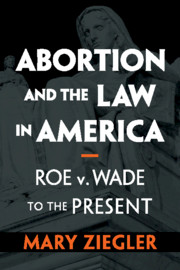Book contents
- Abortion and the Law in America
- Abortion and the Law in America
- Copyright page
- Dedication
- Contents
- Acknowledgments
- Timeline
- Abbreviations
- Introduction
- 1 Roe v. Wade and the Rise of Rights Arguments
- 2 The Hyde Amendment and Its Aftermath
- 3 Launching a Quest to Reverse Roe
- 4 Planned Parenthood v. Casey, the Family, and Equal Citizenship
- 5 Contesting the Relationship between Abortion and Health Care
- 6 Partial-Birth Abortion and Who Decides the Costs and Benefits
- 7 Polarization, Religious Liberty, and the War on Women
- Conclusion
- Notes
- Index
5 - Contesting the Relationship between Abortion and Health Care
Published online by Cambridge University Press: 28 February 2020
- Abortion and the Law in America
- Abortion and the Law in America
- Copyright page
- Dedication
- Contents
- Acknowledgments
- Timeline
- Abbreviations
- Introduction
- 1 Roe v. Wade and the Rise of Rights Arguments
- 2 The Hyde Amendment and Its Aftermath
- 3 Launching a Quest to Reverse Roe
- 4 Planned Parenthood v. Casey, the Family, and Equal Citizenship
- 5 Contesting the Relationship between Abortion and Health Care
- 6 Partial-Birth Abortion and Who Decides the Costs and Benefits
- 7 Polarization, Religious Liberty, and the War on Women
- Conclusion
- Notes
- Index
Summary
Chronicling the mid-1990s, Chapter 5 traces a debate about the relationship between abortion and health care that evolved in the aftermath of Casey. In explaining how incremental restrictions affected women’s equal citizenship, abortion-rights groups emphasized that regulations denied women crucial health benefits. In the political arena, abortion-rights advocates worked to guarantee coverage of the procedure in national health care reform, to repeal bans on Medicaid funding for abortion, to introduce legislation protecting access to clinic entrances, and to ensure access to medical abortion. In court, abortion-rights attorneys also described clinic blockaders – and all abortion foes – as sexists opposed to health care for women. Women of color offered a new framing of the relationship between health care and abortion, calling not for reproductive rights but for reproductive justice. Furthermore, Casey and the health-based offensive led by the abortion-rights movement caused some abortion opponents to lose faith in a strategy centered on the costs of abortion. To regain prominence, attorneys in groups like AUL and NRLC developed a new way of undermining Roe: If the Court saved abortion rights because women relied on it, the pro-life movement would demonstrate that the procedure damaged their health.
Keywords
- Type
- Chapter
- Information
- Abortion and the Law in AmericaRoe v. Wade to the Present, pp. 121 - 149Publisher: Cambridge University PressPrint publication year: 2020

